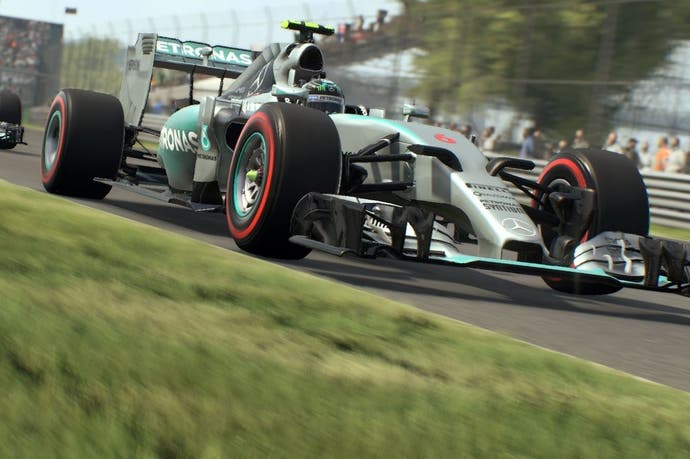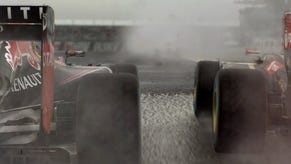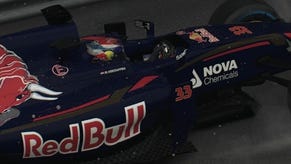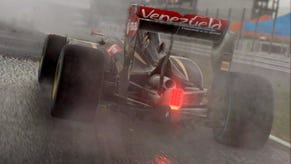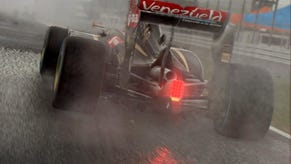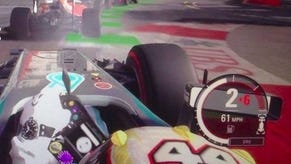Performance Analysis: F1 2015
Initial impressions and frame-rate tests for the PS4 and Xbox One versions.
UPDATE 11/7/15 2:00pm: A closer look at F1 2015 suggests that the Xbox One version of F1 2015 is actually running at 1440x1080, not the 900p the developer has previously suggested. It's an extra eight per cent of resolution over 900p, but more importantly, it limits upscaling artefacts to the horizontal axis only, in part explaining why image quality looks better than expected. We've also revised our comments on texture filtering as the situation here is a little more complex than previously thought.
Original story: F1 2015 is an enticing prospect for fans of Codemasters' racing series. Built using a reworked version of its existing Ego engine, this year's instalment is the first driving game from the studio that targets 60fps since the Colin McRae Rally titles on PS2 and the original Xbox. PS3 and Xbox One saw a prevalence of 30fps caps, but with the new wave of consoles there's a sense that things are starting to change - that there's more of a focus on 60fps gameplay in genres that particularly stand to benefit from smoother, more responsive action.
We'll be taking a closer look at F1 2015 in our upcoming Face-Off (we only received PC code yesterday), but an early look at the game on PS4 and Xbox One reveals some good intentions let down by clear technical shortcomings in the race to achieve the desired 60fps. First impressions start positively enough, as F1 2015 comfortably delivers a significant graphical upgrade over last-gen instalments in the series: trackside scenery is rich with minor detail, while the cars are meticulously modelled right down to the joints that hold the suspension rods in place. F1 2015 uses a mixture of different texture filtering techniques for varying elements in the presentation - sometimes we see a near flawless blend in the overall presentation, but other times the overall effect is not quite so impressive. It seems that some elements in the scene use 4x or 8x anisotropic filtering, while the road appears to use inexpensive trilinear filtering - which is fine as it's mostly a blur in motion.
Native 1080p resolution is also present on the PS4, though the Xbox One game gets a 25 per cent cut in pixel density down to 1440x1080. However, the difference has less of an impact than the numbers suggest: the overall presentation appears a little softer on the Microsoft platform, with a touch more sub-pixel break-up and a slight reduction in resolved texture detail, but otherwise, image quality is broadly comparable to the PS4 game. Codemasters' use of post-processing effects and anti-aliasing results in a softened look to the game across all formats, and this works in favour of the Xbox One release by avoiding the sharp lines that highlight upscaled jaggies, which are mitigated to a certain extent anyway thanks to the single axis upscale.



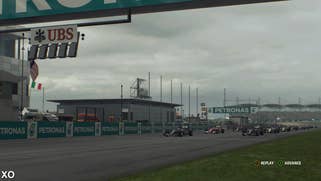
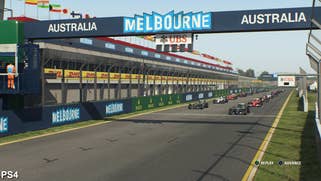
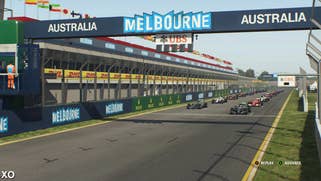

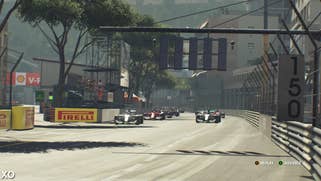
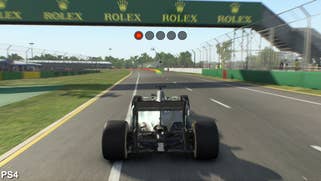

In terms of performance, the jump to targeting 60fps has immediate benefits to the fast-paced racing on offer. The physics and handling model has an increased range of accuracy compared to previous 30fps Formula 1 games leading to more precise steering and throttle control, which helps to enhance the realism of the experience. However, performance is far from stable and both consoles suffer from near constant tearing and varying degrees of frame-rate drops, with the Xbox One struggling more heavily to deliver the desired 60fps update.
Kicking off with a run through in the first part of Monaco, we find frame-rates hovering between 50-60fps on the PS4, with performance hitting lows of around 45fps during crashes or spin-outs when other cars are around. The combination of twisting turns and detailed scenery highlights the judder caused by this inconsistency, and as we dart through the narrow city streets the experience feels uneven as a result. A similar level of performance is replicated across other more heavily detailed tracks in the game, with events such as the Brazilian Grand Prix tending to stress the engine more heavily than the opening race in Melbourne. However, in less demanding areas, frame-rates manage to settle into the high 50s and actually provide a fairly smooth gameplay experience, despite the heavy tearing.
In comparison, the Xbox One version has a much tougher time in reaching the ideal 60fps goal despite the resolution drop, and frequently we find the game operating 10fps slower than the PS4 version in comparable scenes. Performance sticks closely in the 45-50fps area throughout a general run of play, with constant screen-tearing part of the package. This naturally leads to more noticeable judder than the PS4 version, and a loss in fluidity when tackling sharp turns, or as dramatic changes in scenery occur while negotiating busier sections of track. When pushed heavily we see frame-rates dip down close to the low 40s - at which point you begin to think that maybe a 30fps cap might be the better option.
On the plus side, racing down straight segments or navigating through milder corners hides the worst of the tearing pretty well in both consoles (lateral motion tends to emphasis the worst in screen-tear) to the point where gameplay doesn't feel constantly under threat from inconsistencies in frame-rate and screen-tear. The limited viewing area of the cockpit camera also comes in handy in avoiding the worst of the judder, owing to the dashboard taking up a large amount of screen space - dramatic shifts in environment details are more concealed and this helps to hide the most obvious performance issues caused by screen-tear. In particular, problems with consistency are more noticeable when using the chase cam, where more of the environment is visible on screen, making it easier to spot dropped frames and tearing.
While the situation is far from ideal, Codemasters' decision to allow for tearing does have positive gameplay benefits that offset the loss in image consistency. Tearing occurs when the GPU outputs a newly rendered frame while the display is mid-way through the process of refreshing the screen - you're getting new visual information as soon as it is ready, ensuring a faster response from controller inputs at the expense of image integrity. Tying the game's engine to the screen refresh would introduce judder and a more noticeable variance in controls.
Where the gameplay experience isn't at stake, Codemasters chooses a different rendering strategy - in the detail-rich replay sections, the developer adopts a 30fps cap, which sees both consoles hand in a slick, uniform unwavering frame-rate. This strategy is nothing new - Gran Turismo did exactly the same thing in its transition to PlayStation 3 hardware.
As a title targeting 60fps, F1 2015 is on shaky ground. Performance is by no means close to being stable, but the PS4 version comes closest to hitting the target, delivering gameplay that feels a step up in terms of precision and responsiveness, especially when compared directly to the last-gen 30fps titles. The situation is more compromised on Xbox One, with judder more frequently interrupting the experience than we'd like.
As things stand, there's a sense that the developers just about get away with the variable nature of performance. It can look ugly in places, but it mostly feels smooth in gameplay terms. In an ideal world, Codemasters would have been able to sustain a locked 60fps, but since the studio hasn't managed that, effectively it faced a choice between an ugly visual artefact (tearing) and less precise controls. The developer decided to put gameplay first - exactly the same call made by Slightly Mad Studios in Project Cars.
However, the frequently fluctuating frame-rate and near constant tearing can be distracting at times, partially spoiling the work done by Codemasters in creating a more involving Formula 1 driving game compared to its most recent instalments in the series. Hopefully, performance can be somewhat improved in a future update, but based on the metrics seen in the current build, a pretty radical level of optimisation would be required. In the here and now, the PC version may well be the best bet for getting a locked 60fps. This is something we will be covering in the upcoming Face-Off, as we take a more detailed look at the game across all three platforms.
